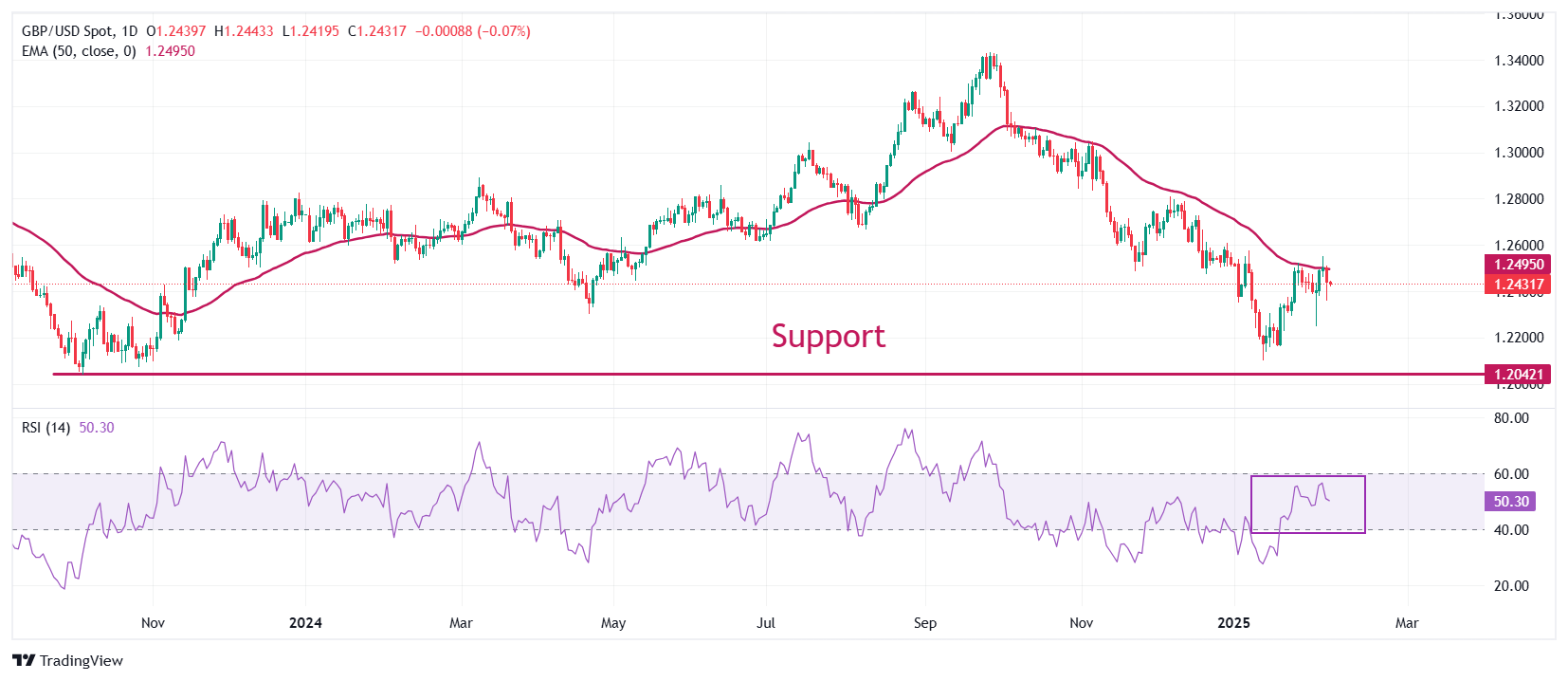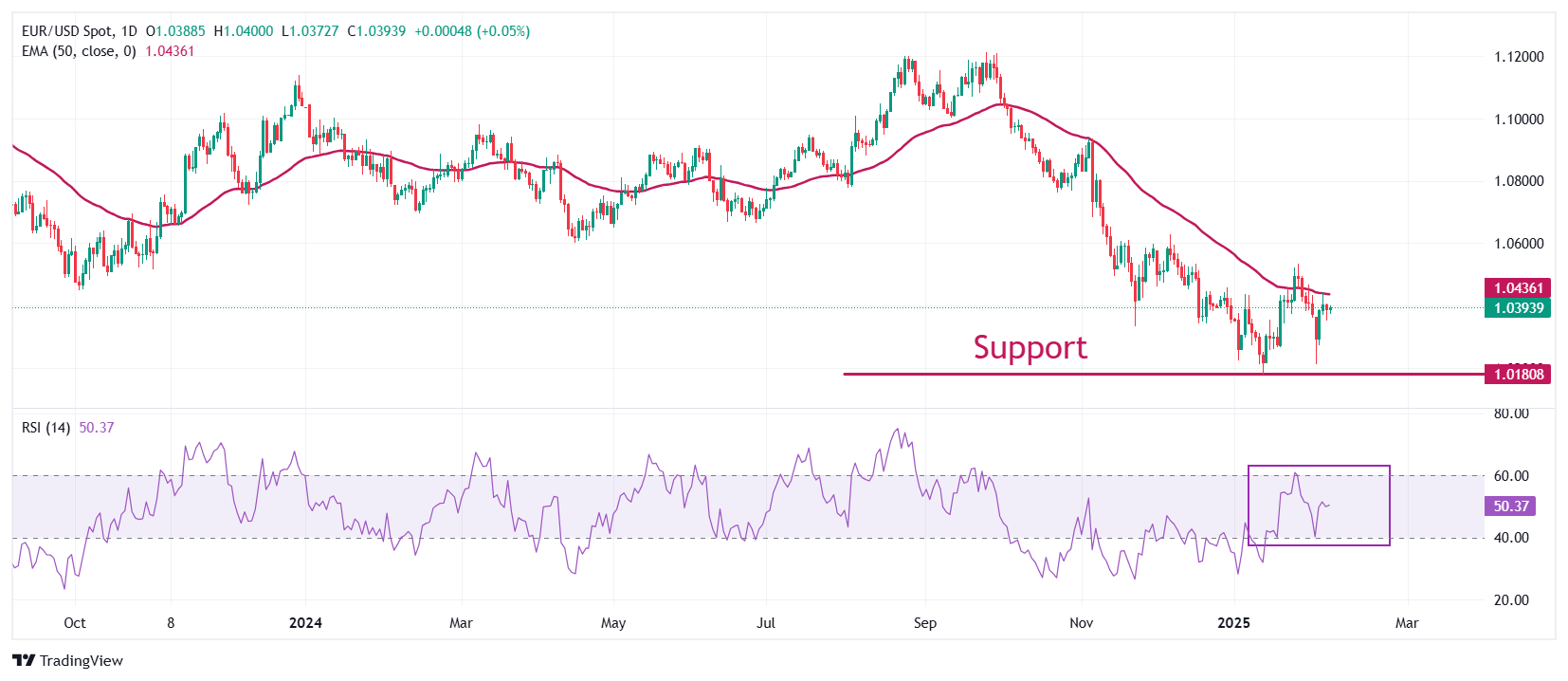Forex Today: January Nonfarm Payrolls data to trigger next big market reaction
The trading action in financial markets turns subdued early Friday as investors move to the sidelines ahead of key macroeconomic data releases. The US Bureau of Labor Statistics will publish January employment report, which will feature Nonfarm Payrolls, Unemployment Rate and wage inflation figures. Labor market data from Canada and comments from central bank officials will also be watched closely by participants.
The US Dollar (USD) Index closed marginally higher on Thursday, supported by the cautious market stance. In the European morning on Friday, the index fluctuates in a narrow range below 108.00. Nonfarm Payrolls in the US are forecast to rise by 170,000 and the Unemployment Rate is seen holding steady at 4.1% in January.
US Dollar PRICE This week
The table below shows the percentage change of US Dollar (USD) against listed major currencies this week. US Dollar was the weakest against the Canadian Dollar.
| USD | EUR | GBP | JPY | CAD | AUD | NZD | CHF | |
|---|---|---|---|---|---|---|---|---|
| USD | -0.11% | -0.23% | -2.02% | -2.60% | -1.15% | -1.43% | -0.98% | |
| EUR | 0.11% | 0.28% | -0.63% | -1.21% | -0.58% | -0.03% | 0.42% | |
| GBP | 0.23% | -0.28% | -1.98% | -1.49% | -0.85% | -0.31% | 0.15% | |
| JPY | 2.02% | 0.63% | 1.98% | -0.58% | 1.05% | 1.53% | 1.70% | |
| CAD | 2.60% | 1.21% | 1.49% | 0.58% | 0.39% | 1.20% | 1.66% | |
| AUD | 1.15% | 0.58% | 0.85% | -1.05% | -0.39% | 0.55% | 1.01% | |
| NZD | 1.43% | 0.03% | 0.31% | -1.53% | -1.20% | -0.55% | 0.45% | |
| CHF | 0.98% | -0.42% | -0.15% | -1.70% | -1.66% | -1.01% | -0.45% |
The heat map shows percentage changes of major currencies against each other. The base currency is picked from the left column, while the quote currency is picked from the top row. For example, if you pick the US Dollar from the left column and move along the horizontal line to the Japanese Yen, the percentage change displayed in the box will represent USD (base)/JPY (quote).
Mexico’s central bank, the Banco de Mexico (Banxico), announced late Thursday that it lowered interest rates by 50 basis points (bps), as anticipated. The decision, however, was not unanimous as Deputy Governor Jonathan Heath voted for a 25 bps rate cut. USD/MXN edged lower and closed in negative territory on Thursday before stabilizing slightly above 20.45 on Friday.
EUR/USD snapped a three-day winning streak on Thursday, pressured by the broad USD resilience. Early Friday, the pair trades sideways below 1.0400. European Central Bank Vice President Luis de Guindos is scheduled to speak later in the European session.
The Bank of England lowered the policy rate by 25 bps to 4.5% after the February meeting, in a widely expected decision. Policymakers voted 7-2 in favor of the 25 bps cut. External Monetary Policy Committee (MPC) members Dhingra and Mann voted to cut rates by 50 bps. In the post-meeting press conference, “we expect to be able to cut bank rate further but we will have to judge meeting by meeting how far and how fast,” BoE Governor Andrew Bailey said. GBP/USD lost more than 0.5% on Thursday but managed to stabilize above 1.2400 early Friday.
Nada Choueiri, Deputy Director of the International Monetary Fund’s (IMF) Asia-Pacific Department and its mission chief for Japan, said on Friday that the Bank of Japan (BoJ) is likely to raise interest rates again this year. USD/JPY extended its weekly slide and touched its lowest level in nearly two months near 151.00 in the Asian session on Friday. The pair stages a rebound in the European morning and trades in positive territory above 151.50.
USD/CAD fluctuated in a narrow channel on Thursday and closed the day virtually unchanged. The pair struggles to find direction early Friday and moves up and down in a tight range above 1.4300. The Unemployment Rate in Canada is forecast to tick up to 6.8% from 6.7%.
Gold corrected lower on Thursday following a five-day rally that saw the price hit a record-high above $2,880 on Wednesday. XAU/USD stays relatively calm early Friday and trades near $2,860.
Nonfarm Payrolls FAQs
Nonfarm Payrolls (NFP) are part of the US Bureau of Labor Statistics monthly jobs report. The Nonfarm Payrolls component specifically measures the change in the number of people employed in the US during the previous month, excluding the farming industry.
The Nonfarm Payrolls figure can influence the decisions of the Federal Reserve by providing a measure of how successfully the Fed is meeting its mandate of fostering full employment and 2% inflation. A relatively high NFP figure means more people are in employment, earning more money and therefore probably spending more. A relatively low Nonfarm Payrolls’ result, on the either hand, could mean people are struggling to find work. The Fed will typically raise interest rates to combat high inflation triggered by low unemployment, and lower them to stimulate a stagnant labor market.
Nonfarm Payrolls generally have a positive correlation with the US Dollar. This means when payrolls’ figures come out higher-than-expected the USD tends to rally and vice versa when they are lower. NFPs influence the US Dollar by virtue of their impact on inflation, monetary policy expectations and interest rates. A higher NFP usually means the Federal Reserve will be more tight in its monetary policy, supporting the USD.
Nonfarm Payrolls are generally negatively-correlated with the price of Gold. This means a higher-than-expected payrolls’ figure will have a depressing effect on the Gold price and vice versa. Higher NFP generally has a positive effect on the value of the USD, and like most major commodities Gold is priced in US Dollars. If the USD gains in value, therefore, it requires less Dollars to buy an ounce of Gold. Also, higher interest rates (typically helped higher NFPs) also lessen the attractiveness of Gold as an investment compared to staying in cash, where the money will at least earn interest.
Nonfarm Payrolls is only one component within a bigger jobs report and it can be overshadowed by the other components. At times, when NFP come out higher-than-forecast, but the Average Weekly Earnings is lower than expected, the market has ignored the potentially inflationary effect of the headline result and interpreted the fall in earnings as deflationary. The Participation Rate and the Average Weekly Hours components can also influence the market reaction, but only in seldom events like the “Great Resignation” or the Global Financial Crisis.



